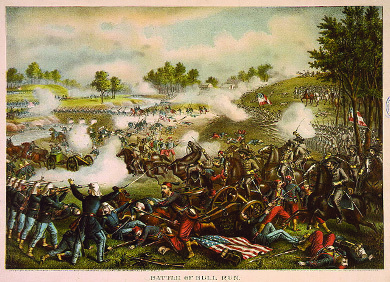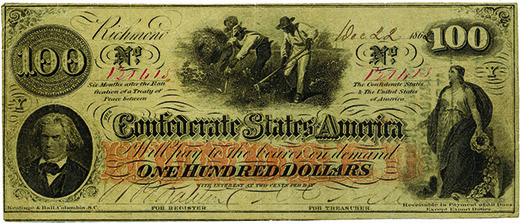| << Chapter < Page | Chapter >> Page > |

As it became clearer that the Union would not be dealing with an easily quashed rebellion, the two sides assessed their strengths and weaknesses. At the onset on the war, in 1861 and 1862, they stood as relatively equal combatants.
The Confederates had the advantage of being able to wage a defensive war, rather than an offensive one. They had to protect and preserve their new boundaries, but they did not have to be the aggressors against the Union. The war would be fought primarily in the South, which gave the Confederates the advantages of the knowledge of the terrain and the support of the civilian population. Further, the vast coastline from Texas to Virginia offered ample opportunities to evade the Union blockade. And with the addition of the Upper South states, especially Virginia, North Carolina, Tennessee, and Arkansas, the Confederacy gained a much larger share of natural resources and industrial might than the Deep South states could muster.
Still, the Confederacy had disadvantages. The South’s economy depended heavily on the export of cotton, but with the naval blockade, the flow of cotton to England, the region’s primary importer, came to an end. The blockade also made it difficult to import manufactured goods. Although the secession of the Upper South added some industrial assets to the Confederacy, overall, the South lacked substantive industry or an extensive railroad infrastructure to move men and supplies. To deal with the lack of commerce and the resulting lack of funds, the Confederate government began printing paper money, leading to runaway inflation ( [link] ). The advantage that came from fighting on home territory quickly turned to a disadvantage when Confederate armies were defeated and Union forces destroyed Southern farms and towns, and forced Southern civilians to take to the road as refugees. Finally, the population of the South stood at fewer than nine million people, of whom nearly four million were black slaves, compared to over twenty million residents in the North. These limited numbers became a major factor as the war dragged on and the death toll rose.

The Union side held many advantages as well. Its larger population, bolstered by continued immigration from Europe throughout the 1860s, gave it greater manpower reserves to draw upon. The North’s greater industrial capabilities and extensive railroad grid made it far better able to mobilize men and supplies for the war effort. The Industrial Revolution and the transportation revolution, beginning in the 1820s and continuing over the next several decades, had transformed the North. Throughout the war, the North was able to produce more war materials and move goods more quickly than the South. Furthermore, the farms of New England, the Mid-Atlantic, the Old Northwest, and the prairie states supplied Northern civilians and Union troops with abundant food throughout the war. Food shortages and hungry civilians were common in the South, where the best land was devoted to raising cotton, but not in the North.

Notification Switch
Would you like to follow the 'U.s. history' conversation and receive update notifications?